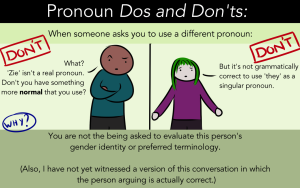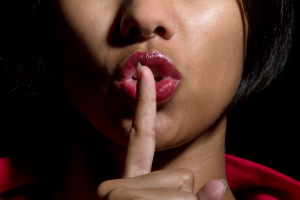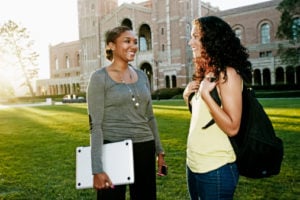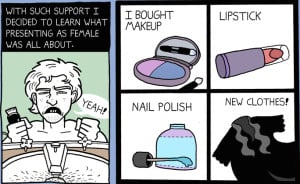Originally posted on Change Within and cross-posted with their permission.

Credit: Edutopia
Lately I have been facilitating a lot of professional development sessions for teachers on building inclusive environments for diverse student populations.
And one thing is clear to me: most teachers want to be as supportive as possible to Lesbian, Gay, Bisexual, Transgender, and Queer/Questioning (LGBTQ) students but aren’t sure how best to do so.
The unfortunate reality is that few schools are safe spaces for LGBTQ students:
- 84.6% of LGBT students reported being verbally harassed, 40.1% reported being physically harassed and 18.8% reported being physically assaulted at school in the past year because of their sexual orientation.
- 63.7% of LGBT students reported being verbally harassed, 27.2% reported being physically harassed and 12.5% reported being physically assaulted at school in the past year because of their gender expression.
- 72.4% heard homophobic remarks, such as “faggot” or “dyke,” frequently or often at school.
- Nearly two-thirds (61.1%) of students reported that they felt unsafe in school because of their sexual orientation, and more than a third (39.9%) felt unsafe because of their gender expression.
- 29.1% of LGBT students missed a class at least once and 30.0% missed at least one day of school in the past month because of safety concerns, compared to only 8.0% and 6.7%, respectively, of a national sample of secondary school students.
- The reported grade point average of students who were more frequently harassed because of their sexual orientation or gender expression was almost half a grade lower than for students who were less often harassed (2.7 vs. 3.1).
- Increased levels of victimization were related to increased levels of depression and anxiety and decreased levels of self-esteem.
- Being out in school had positive and negative repercussions for LGBT students %96 outness was related to higher levels of victimization, but also higher levels of psychological well-being.
(Source: GLSEN 2009 National School Climate Survey)
As a result, more and more teachers are looking for help in supporting their LGBTQ students, and schools are looking for proactive ways to create a safer environment for students of all sexual orientations.
To try to offer support, I have compiled a list of 10 things teachers can do to create a more inclusive classroom environment for LGBTQ students. Though these can in no way be comprehensive, they are meant to be a starting place for better supporting our LGBTQ students in the classroom environment.
1. Use Inclusive Language
- Use precise terms like Lesbian, Gay, Bisexual, Transgender, Queer, and Questioning (LGBTQ) rather than homosexual or gay as an umbrella term.
- Use terms like partner instead of boyfriend and girlfriend or husband and wife.
2. Never Tolerate Abusive Language in your Classroom or in the Halls
- Language like “that’s so gay” or “you’re such a fag” is common in schools, and it actively creates an unsafe environment for LGBTQ students and LGBTQ Allies. We must respond to (and be sure not to ignore such language).
- Don’t simply be punitive with hurtful language. Instead, explain why it is not welcome and is hurtful. This helps students understand why they shouldn’t use the language rather than just making them avoid using it around you.
3. Never Assume Heterosexuality
- Building relationships with students is wonderful! Ask about students’ lives, but don’t assume heterosexuality in your language.
- A question like “Are you seeing anybody these days?” goes a lot further than “Do you have a boyfriend/girlfriend?”
4. Maintain Confidentiality with the Confines of your Professional Responsibilities
- There are certain things like abuse that we cannot keep confidential, but outside of that, make sure students feel safe by always keep what they share in confidentiality.
- Create a space in which students can talk to you about their struggles, helping all students to understand that you are someone they can talk to during free time.
- Be careful never to “out” an LGBTQ student, meaning that if a student is not open in their sexual orientation and they share that with you, be careful not to share that information with others. Sometimes being out can be more dangerous than being closeted.
5. Keep an Eye Out for Bullying and Act to Stop It
- It’s tough to know the best way to respond to bullying. Sometimes it means interrupting bullying as it happens. Sometimes it means talking to the bullies or the bullied afterward.
- In responding to bullying, be careful to not make the target out to be the weak one in the situation, as that can make bullying worse in the long run.
6. Respect the Needs and Wishes of Lesbian, Gay, and Bisexual Students
- Support them in their decisions and their needs, helping them to make safe choices that will help them be happy and fully realized as a young person.
- Questions like “are you sure?” and “could this be a phase?” are not helpful.
7. Respect the Needs and Wishes of Transgender Students
- Respect the names students wish to be called and the pronouns they prefer. When unsure, ask with empathy and respect.
- Respect the clothing choices students make, supporting them as they figure out how they want to perform their gender.
8. Encourage Respectful Disagreement on Issues of Sexual Identity
- Dialogue and discussion inside and outside the classroom are helpful and healthy so long as respectful.
- Don’t shut down conversations about sexual orientation and gender identity, but make sure to facilitate the conversation down inclusive roads and correct misconceptions.
9. Recognize that You’re Not an Expert
- You will make mistakes and occasionally be insensitive.
- Humble yourself and apologize where necessary; learn from your mistakes, and always try to broaden your understanding of LGBTQ issues so you can best support all of your students.
10. Acknowledge that Building an Inclusive Community Is Better for Everyone
- Fight to make it a school-wide priority.
- Inclusive communities experience less bullying and violence.
- Inclusive communities are likely to boast higher achievement and are stronger school spirit.
For more ideas for building an inclusive community, check out the recommendations for positive interventions and support from the Gay, Lesbian, and Straight Education Network.
Want to discuss this further? Login to our online forum and start a post! If you’re not already registered as a forum user, please register first here.
Jamie is a Contributing Writer for Everyday Feminism and a diversity and inclusion consultant and sexual violence prevention educator based in Minneapolis, MN. He lives with his loving partner and his funtastic dog. He blogs weekly at Change from Within. Learn more about his work at his website here, book him for a speaking engagement here, and follow him on Twitter @utt_jamie.
Search our 3000+ articles!
Read our articles about:
Our online racial justice training
Used by hundreds of universities, non-profits, and businesses.
Click to learn more




















